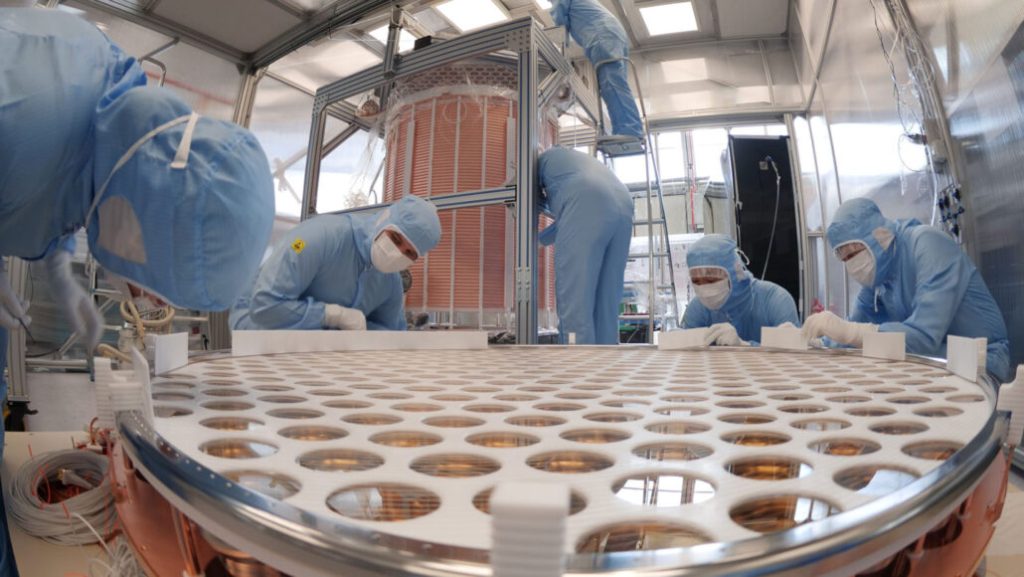A new dark matter experiment quashed earlier hints of new particles

Potential hints of weird new particles in a dark matter detector have evaporated with new data.
Following up on a beguiling result from its predecessor experiment, the XENONnT experiment found no sign of extra blips that could point to new particles or another phenomenon, scientists report July 22 in Vienna at the International Conference on Identification of Dark Matter.
The XENONnT experiment (pronounced “xenon n ton”), at the Gran Sasso National Laboratory in Italy, uses 5.9 metric tons of liquid xenon to search for dark matter, an elusive substance that so far has been seen only via its gravitational effects in the cosmos (SN: 10/25/16). The detector is designed to look for dark matter particles crashing into xenon atoms’ nuclei, causing them to recoil. But the detector can also spot recoiling electrons.
In 2020, a smaller version of the experiment, called XENON1T, reported greater-than-expected numbers of those ricocheting electrons (SN: 6/17/20). “This caused a lot of stir when we published it,” says physicist Rafael Lang of Purdue University in West Lafayette, Ind.
That surplus, some scientists suggested, could have been explained by some unexpected new physics, such as hypothetical lightweight particles that may originate from the sun called solar axions. But the excess wasn’t large enough to be convincing, so more data were needed.
In the new analysis, which uses about 97 days of data, XENONnT spotted as many electron recoils as expected due to known particle interactions, the researchers also reported in a paper posted on the experiment’s website. Scientists don’t know what caused the extra detections in the previous experiment, but it’s possible it was merely a statistical fluke, Lang says. Or it may have been due to small amounts of tritium — hydrogen atoms with two neutrons in their nuclei — in the detector.
With the red herring out of the way, XENONnT researchers are now combing through their data for nuclear recoils, in hopes of detecting the real deal.